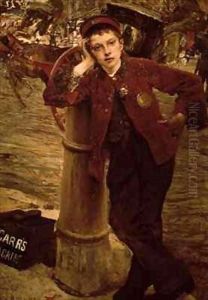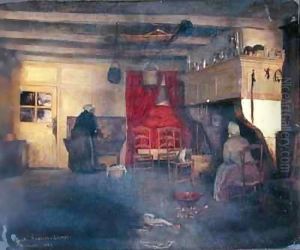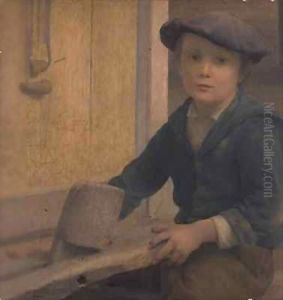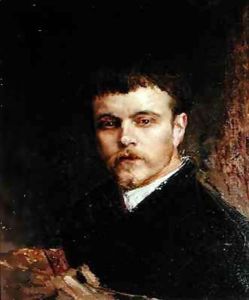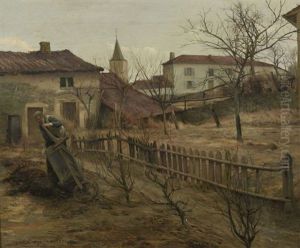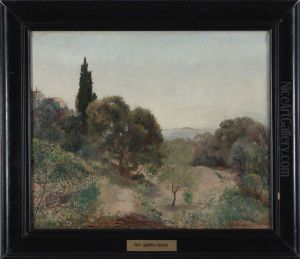Emile Bastien-Lepage Paintings
Émile Bastien-Lepage was a French painter who was born on November 1, 1848, in the village of Damvillers, Meuse, and died on December 10, 1884, in Paris. He is often confused with his more famous cousin, the naturalist painter Jules Bastien-Lepage. While Émile received some recognition for his work, his career was overshadowed by that of Jules, who was a leading figure in the Naturalist art movement.
Émile Bastien-Lepage shared a similar background to Jules, as they both came from a rural setting in Lorraine, which influenced their choice of subjects and their approach to painting. Émile's artistic journey was marked by his relationship with his cousin, from whom he received guidance and inspiration. Although there is limited information on Émile's life and work, it is known that he produced a number of paintings that depicted rural life, in line with the naturalist aesthetic. His works, like those of Jules, often featured peasants and agricultural laborers, rendered with a sense of realism and attention to detail.
Despite his efforts, Émile Bastien-Lepage did not achieve the same level of success as Jules. His works were exhibited in Paris and received some critical attention, but he struggled to gain the prominence of his cousin. The confusion between the two artists has also led to difficulties in attributing certain works, with some paintings once thought to be by Émile now believed to be the work of Jules.
Émile Bastien-Lepage's career was cut short by his early death at the age of 36. He passed away in Paris, where he had spent his professional life attempting to build his reputation as an artist. While his achievements may not have placed him at the forefront of the art world, Émile contributed to the naturalist movement and provided a unique perspective on the rural life of his time. His legacy, although overshadowed, remains a part of the rich tapestry of 19th-century French painting.
